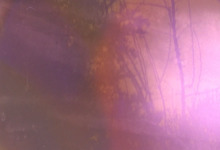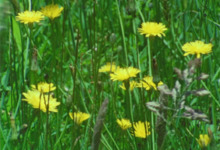- Images (3)
- Liens (1)
- Agenda

|

|

|
Ningún lugar para morir (2019) by Andrea Novoa is part of the Atelier 105 film program that you can watch here from Monday 22 to Sunday 28 February 2021.
Your film interweaves the political and the personal on various levels. Can you tell us about the forest you filmed and the different stories that you develop within it?
The place portrayed in the film is the forest where I live since I moved from the Chilean capital, Santiago, a few years ago. It is located in the Araucania Region, the main zone of the indigenous territorial conflict.
The forest I film is the one around my home. Located in the foothills of the Andes, it is covered with native trees and surrounded by volcanoes.
For now, it remains narrowly safe from the predatory timber industry that constantly threatens and attacks the forest and the Mapuche people. But, since the forest exceeds the limits established by the government, the threat is palpable.
The territory where I film has been ancestrally inhabited by indigenous communities. They have been in their majority displaced or eradicated in the most horrible ways since colonial times and until today. In fact, the forest and the communities are treated with brutality by the wealthiest families of Chile, owners of the timber companies, which are allied with the government. The Mapuches are constantly bullied by military forces and state police, murdered under democratic governments.
My portrait of this forest joins this denunciation.
It is also the place that accompanied me during my pregnancy with my first daughter and received me at the time when I had to face her death.
It is a territory that represents the living struggle of the Mapuche people to defend their land and its ancestral wisdom. It is the place where I live and that gives me strength. It is a forest that should not die.
This film is the third part of your trilogy Desastres Naturales (Natural Disasters). Can you tell us about this body of work and about how “natural” are the disasters you evoke?
Desastres Naturales is a series of three films made in three different territories over the course of four years. Each one is independent, and they were not meant as companion pieces at the time they were shot.
Over time, these film portraits of places I inhabited encountered my journal writings and the occurrences of natural phenomena.
The first film is Tropico Violeta, shot in Cuba, edited in-camera, reprinted artisanally and re-edited by hand. This chapter evokes my encounter with the hurricane Irma that took place when I was living in La Habana. This event is related through my first analog experimentations, images of a feminine body in relation with nature and games of color.
The second one, entitled Vuelvo a casa, was shot in the mountains, in the Cordillera of the Andes, near Santiago, my hometown.
My diary speaks of earthquakes unfelt due to being away and about my reencounter with my “home” after a long period spent outside.
The third one is Ningún lugar para morir, shot in the forest, which I mentioned before, during a period of intense volcano activity. This film is born from an encounter with death as well as with the strength of the territory and the indigenous struggle to defend it.
You make photochemical films, which you process yourself. Please share with us more about your practice and the conditions of analog filmmaking in Chile today.
My analog practice begins with my photography studies and is still based on a process of trial and error. In the first year of my studies, I became acquainted with the photo laboratory and learned how to develop negatives. Then the instruction switched to digital. I continued to work in analog photography and eventually built a small laboratory in the bathroom of my studio to develop my negatives and those of others with the same need, since most commercial laboratories were ceasing to develop black and white.
Some time later, while I was in Cuba, I met a group of students who were bringing back to life the San Antonio de los Baños School laboratory, and we spent time sharing and reusing expired chemistry. It was there that, a year later, I participated in a workshop given by the filmmaker Daïchi Saïto, in which we filmed and experimented with 16mm color print film.
Back in Chile, I looked for a way to keep filming. I managed to bring film stock and borrowed a Bolex camera, and, by the time that I needed to develop, I had met a group of filmmakers who had a processing tank and were developing in a home laboratory. They were testing formulas and trying things, advised by Nelson Vargas, a lab technician whose laboratory, CronoFoto, has survived the arrival of digital technology in Chile. In the beginning, with this collective named Ceis8, we use to meet at night and project the films in progress that each one of us was working on. We helped each other to develop, find people who could bring from abroad films and chemistry that, even today, are impossible to find in Chile.
Coming together was fundamental for us to keep working. Our group grew as we welcomed more members, and we organized itinerant public projections on 16mm and Super 8. These events made us realize that a large circle of people enjoyed watching analog cinema and were interested in experimental practices. We then started to propose educational workshops and invite other filmmakers to participate, as we kept the screenings going.
At this point, we had made our way out of the bathroom. We installed the laboratory in a spacious studio, which allowed us to present open-air screenings. Then we received the unexpected visit of the filmmakers Dianna Barrie and Richard Tuohy (Nonolab, Australia) who taught us to strike prints with a projector and showed us the color-timing machine they had made. They shared with us their knowledge and helped us with materials and equipment so we could continue working in the future.
And so the « magic » kept happening in a place where cinema as an analog practice repeatedly runs into difficulties. Film stock is rare, projectors break, developing tanks are held up at customs, and the conditions are still very precarious.
But we keep making handmade films, which makes a lot of sense to me. It compels me to insist on making films, believe in luck and respect the chemistry.
A few years ago, running away from the rhythms and productivist pressures of the city, I moved to the south of Chile and settled there. Together with the filmmaker Fernanda Vicenz we created Praeclara Imagen, a lab and film creation project, now in its initial stages. We’re working on creating a darkroom, collecting equipment and elaborating projects with the aim to bring together analog cinema practice and ecology.
| lieu |
En ligne / Online Atelier 105 Paris France |
|---|---|
| lightcone@lightcone.org | |
| lien en relation |
ATELIER 105 EN LIGNE
|